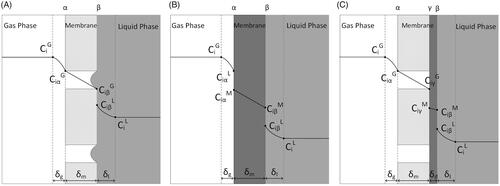Figures & data
Table 1. Expression of local mass transfer coefficients.
Table 2. Expression of overall mass transfer coefficients (based on the liquid side), for gas–liquid membrane contacting applications [Citation25].
Table 3. Design parameters for membrane module selection. [Citation26].
Table 4. Different HFM reactor configurations studied for syngas mass transfer, respective characteristics and the maximum KLa reported.
Table 5. HFM bioreactor configurations for syngas fermentation and respective operational conditions.
Table 6. Summary of flow configurations in a hollow fiber membrane reactor and their respective advantages.
![Figure 1. Schematic representation of the simplified Wood–Ljungdahl pathway of acetogens and their (native) metabolic end products [Citation1,Citation2]. Acetogenic microorganisms are able to produce different combinations of the depicted organic products, depending on their metabolism.](/cms/asset/05de97bd-8d76-487e-b137-640e81b054e8/ibty_a_1965952_f0001_c.jpg)

![Figure 3. HFM modules with (A) tubesheets at both ends; (B) a single tubesheet in a U shaped bundle; (C) one tubesheet and one sealed end; (D, E) gas feed entering the bundle from the perforations on the central tube and exiting from (D) the port on the housing or (E) the perforations toward the other end; (F) Baffles with alternating clearances at top and bottom to force the flow up and down. Based on [Citation41].](/cms/asset/1a8f6192-e0d0-45ce-a38c-4e4e65be5372/ibty_a_1965952_f0003_b.jpg)
